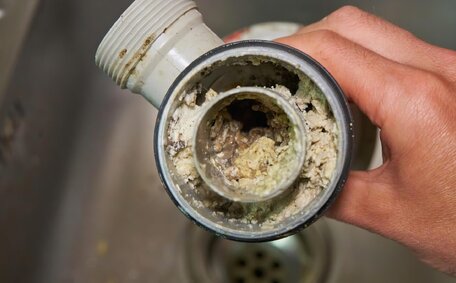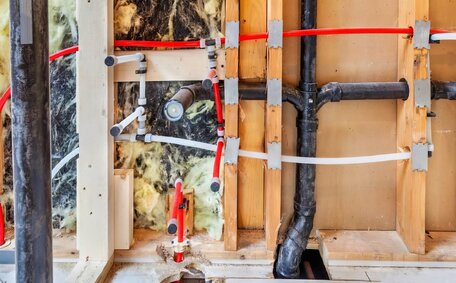Early Drainage Systems in Ancient Civilizations
The first known drainage systems date back over 5,000 years ago to the Indus Valley civilisation in modern day Pakistan and northwestern India. This Bronze Age society was a forerunner in developing drainage and sewage systems, using baked clay pipes and channels to efficiently manage waste and stormwater.
Archaeological findings reveal the Indus Valley drainage systems incorporated ditches and gutters for stormwater and clay pipes for household sewage removal. Cesspits and soak pits were essential elements of these early sewage systems, playing a significant role in waste management. These innovations in sewage systems played a crucial role in supporting urbanisation and enhancing sanitation.
By 3000 BC, the Indus Valley boasted a sophisticated water supply and drainage system unparalleled in the ancient world until Roman engineering over 2000 years later. The technical achievements and urban planning from this era underscore the emphasis on effective plumbing and water management in early societies.
Drainage Designs in Greek and Roman Times
The ancient Greeks and Romans developed sophisticated drainage infrastructure, fusing functionality with aesthetic grandeur. Elaborate covered drains, flanked by colonnades known as cryptoporticus, directed stormwater downhill while offering sheltered walkways.
Roman engineering achievements, like the precise Cloaca Maxima sewer system and aqueducts with arches striding across ravines, were groundbreaking. Lion-headed fountains craftily sent surplus water away into conduits below street levels.
This fusion of practical waste and rainfall diversion with majestic civic works set lofty benchmarks in antiquity. Roman plumbing not only met basic sanitation requirements but also supported expansive public baths, latrines, fountains, and villas’ underfloor heating, enabled by hydraulically cemented conduits.
Expansion of Drainage During the Middle Ages
Drainage infrastructure expanded considerably in Europe during the Middle Ages. Iron and lead drainage pipes were increasingly adopted to replace decaying hollowed logs. By the 12th century, there was the innovative introduction of downpipes with hoppers to funnel rainwater from rooftops into street-level channels.
A prominent early example was the new guttering installed on the White Tower of the Tower of London. Constructed from cast iron in 1078 AD, these systems represented the growing material knowledge and civic investment in managing water flows through cities.
Stone conduits with manhole access also enabled broader drainage systems harnessing natural gradients. Cesspools evolved into covered subterranean structures accessing pipe junctions. Though basic compared to Roman feats, Mediaeval drainage facilitated higher urban densities alongside rising living standards.
The Advent of Modern Drainage in the 17th Century
Drainage systems underwent notable enhancements in 17th century Europe, gradually transitioning from antiquated materials to forerunners of contemporary methodology.
Copper and lead sheeting replaced traditional wood and terracotta piping in aristocratic households, enabling more durable waste transport. French scientist Edme Mariotte’s 1676 treatise on hydraulics had been seminal in informing the architectural integration of rainwater harvesting using downpipes, storage cisterns, and overflow relief valves.
Street drainage advanced with covered brick conduits in place of open channels prone to blockages. Settlement tanks helped intercept sediments, while vermin guards and vent stacks mitigated smells and gases. Manhole access was devised for system maintenance.
These systemic upgrades enhanced functionality, longevity, and sanitation standards. Innovations later facilitated large-scale municipal sewage and clean water distribution through pipes and tunnels – hallmarks of modernamenity.
The French Drain & Subsurface Water Management (1859)
The 'French drain’, pioneered by agriculturalist Henry Flagg French in 1859, marked an influential development in subsurface water management. This passive drainage method intercepts groundwater flows using a trench filled with gravel or crushed stone to accelerate soil drainage.
French’s innovative system directed moisture away from farmlands prone to waterlogging. Narrow trenches up to 3 feet deep were dug, containing a bottom pipe encapsulated by coarse aggregate. This gravel backfill provides voids for groundwater migration towards the perforated collector pipe, which conveys flows towards discharge areas.
The application of French drains expanded to include foundations, retaining walls, gardens, and landscaping. French drains, with their gravity-fed, low-maintenance nature, are well-suited to rural rather than urban settings. However, core concepts have manifested modern-day equivalents like soakwells and leach drains supporting stormwater management.
Implementing City Sewer Systems in the 19th Century
Urban population booms during the 1800s prompted major investments in city sewer systems aiming to combat squalid living conditions and contagious diseases.
Early 19th century drainage relied on piecemeal brick conduits erected haphazardly as cities outgrew infrastructure. Night soil workers manually collected waste for fertiliser use. But with rising urban density, faecal contamination of water supplies caused cholera and typhus outbreaks.
In reaction, cities established centralised sewage management in a pivotal sanitation transition, starting with Hamburg using weight-based billing for waste removal. By the 1850s, London had established an integrated 'separate system’, with street runoff channelled into storm drains and household waste directed through lime-washed brick sewers, all overseen by organized administrative bodies.
Though rudimentary by modern standards, these organised citywide networks extending across urban zones substantially reduced disease risks and demonstrated how we can grasp the importance of civic sanitation planning, laying the foundation for truly modern domestic plumbing.
Shift from Metal to PVC Pipes in the 20th Century
For over a century, cast iron, galvanized steel, and copper dominated early 20th-century plumbing due to robustness and durability.
However, post-war suburban expansion and large-scale infrastructure projects necessitated cost-effective, corrosion-resistant materials. This fueled a shift from metal to plastic pipes, especially polyvinyl chloride (PVC).
PVC pipes, introduced in 1926, gained popularity in the 1950s due to the economies of mass production and their potential for customization. Unplasticised PVC delivered high-pressure resilience for drinking water plumbing while plasticisers improved flexure resistance for sewers.
Thermoplastic piping offered benefits like easier installation, noise reduction, and corrosion resistance over traditional metal piping. By the 1970s, PVC accounted for over 50% of global plastic pipe production, offering an affordable, adaptable solution for modern plumbing systems.
Sustainable Urban Drainage Systems (SuDS)
Emerging in the 1990s, Sustainable Urban Drainage Systems (SuDS) offered eco-friendly solutions to urban environmental impacts.
Diverging from conventional hard infrastructure, SuDS use soft engineering to replicate natural drainage methods. Technologies such as rain gardens, green roofs, infiltration trenches, permeable pavements, and vegetated swales are employed to gently convey surface water.
Mimicking nature, SuDS solutions manage stormwater and drainage onsite through retention, detention, infiltration and passive treatment. This restores aquifer recharge and stream health while enhancing green spaces amenity.
SuDS schemes enhance climate resilience by decentralising water management, suitable for areas with higher rainfall and urban density. They lower flooding, pollution and infrastructure loads via gradual discharge.
Balancing engineering with ecology, the flexible design of SuDS promotes sustainable water management across varied urban landscapes.
Water-Sensitive Urban Design
Water-Sensitive Urban Design (WSUD) encapsulates integrated planning and engineering processes aiming to minimise hydrological impacts stemming from urbanisation. WSUD strategies underpin sustainable stormwater systems through design customised to location-specific conditions.
Breaking from traditional drainage designs with standardized approaches, WSUD advocates for decentralized configurations tailored to regional climates and community needs. Developments feature clusters of bespoke technologies catering runoff detention, filtration and managed discharge through nature-mimicking channel designs.
Typical WSUD mechanisms comprise rainwater tanks, bio-filtration planter boxes, swales containing check dams and subtle grade transitions replacing traditional kerbs and drains. This transformation of urban environments enhances livability and protects the ecosystems through the maintenance of natural water flow. WSUD is now mandated practise for limiting borough flooding and minimising potable water demands across drought-prone regions of Australia.
At the core of WSUD lie principles of water conservation and the protection of waterways. This approach signals a broader shift towards decentralised, diverse systems over traditional centralised infrastructure in drainage planning. This resilience allows local governments to balance recreational areas, population growth, and environmental stewardship effectively.
Modern Innovations in Drainage Systems
Contemporary drainage technologies leverage past innovations alongside modern materials and sustainability principles.
Cost-competitive drainage composites integrating geotextile filters and structured plastic cores offer rapid installation compared to traditional granular aggregates in French Drains. Builders enjoy the advantages of these modular systems, which are ready for installation, offering customisable sizes, consistent performance, and lightweight characteristics. Drainage composites also come in high-strength varieties for underlying structural support in green spaces or driveways.
Advanced drainage planning uses computational modelling to balance complex considerations such as runoff, topography and weather resilience. Sensor networks monitor flows and water quality while computer-controlled actuators regulate dynamic drainage mechanics.
Modern systems adhere to fundamental drainage principles, incorporating nature-inspired and decentralised layouts to uphold the natural water cycle. Contemporary drainage systems demand bespoke solutions that address the distinct challenges and prerequisites of their specific locales.






